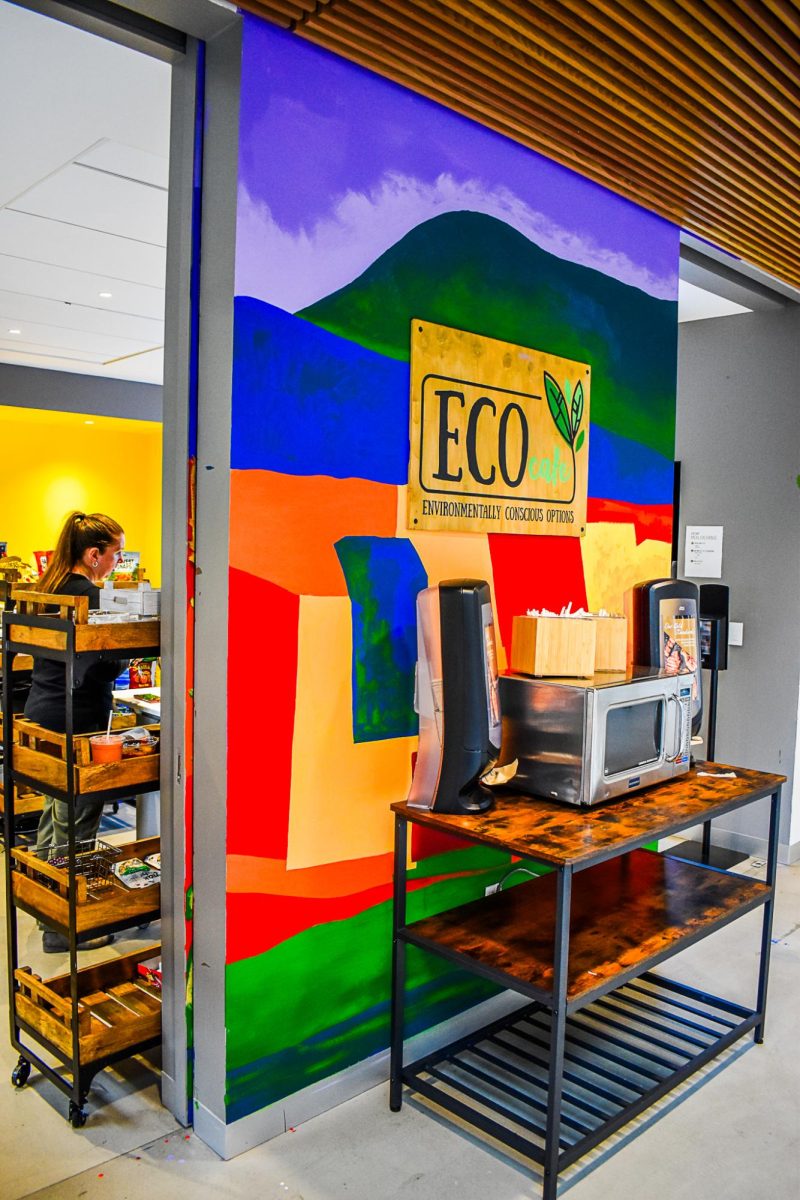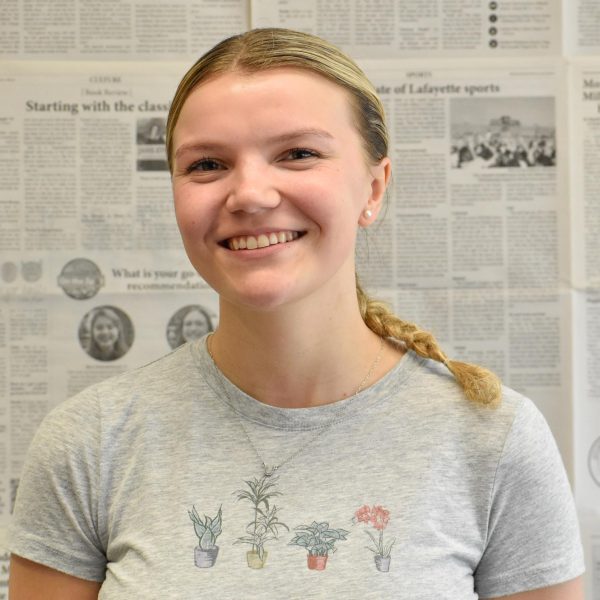Jolie Saint Vil ‘27 is familiar with painting on large canvases – but not as large as the walls of Rockwell Integrated Science Center, also known as RISC.
The Office of Sustainability, in partnership with Dining Services, approached Saint Vil early in the semester with the task of painting a mural on the doors of Eco Cafe. Saint Vil, a studio art major, felt up for the challenge.
“I’m only a freshman,” Saint Vil said. “I think that it’s pretty awesome that I’ve gotten these opportunities to make my mark at Lafayette.”
In just two weekends, Saint Vil turned blank walls into an explosion of purple, green, red, yellow and orange hills. The mural is intended to be a colorful representation of the Lehigh Valley’s landscape.
“I wanted something that would bring color to RISC,” Saint Vil said of the process.
“[The walls] just present this beautiful canvas that could be taken to the next level to embody more of what Eco Café could represent,” said Samantha Smith, outreach and engagement manager of the Office of Sustainability.
Working on a bigger scale and in a different style than the portrait paintings she is used to, Saint Vil used her favorite colors in the landscape to add her own personal touch.
“I was able to have a piece of myself in something that I don’t typically do,” Saint Vil said.
At the bottom of the landscape, Saint Vil illustrated corn, beans and squash to represent the crops that the Lenni Lenape people, who inhabited the land that is now the Lehigh Valley, depended on along with other Indigenous groups.
These crops are known as the “three sisters” and thrive when grown together, as they nurture each other in a mutually beneficial relationship akin to family.
According to Smith, this concept reflects the connection between Lafayette and its history.
“In a beautiful way, Lafayette is growing together with both our campus community, our partners and beyond in our Easton community,” Smith continued. “These symbols sort of represent that.”
When searching for what aspect of the Lenni Lenape people to highlight in the mural, Saint Vil felt drawn to their agricultural practices.
“They invented the farming here,” Saint Vil said. “They cultivated the landscape. I thought it would be cool to give a little bit of props to that.”
Displaying the history of the Lenni Lenape people through an artistic lens adds a fresh perspective and audience to the ideas of Indigenous recognition and sustainability, according to Smith.
“Bringing in these different elements like art is one way to showcase and bring other audiences into the mix, to show that anyone can be a part of the solution,” Smith said.
For the workers at Eco Cafe, the mural provides a fresh new look to their environment.
“I think it’s a really beautiful mural,” said Karen Weigand, a supervisor at Eco Cafe. “It looks better than it looked before, especially when the doors are closed.”
This recognition is an important step in acknowledging the land within Lafayette now resides and the people who came before us, Smith added.
“We’re not just one slice of Earth that belongs to us,” Smith said. “We are a part of the Easton community. We are a part of the land in which we are situated. It was important to us that we think beyond Lafayette’s borders.”
























































































































